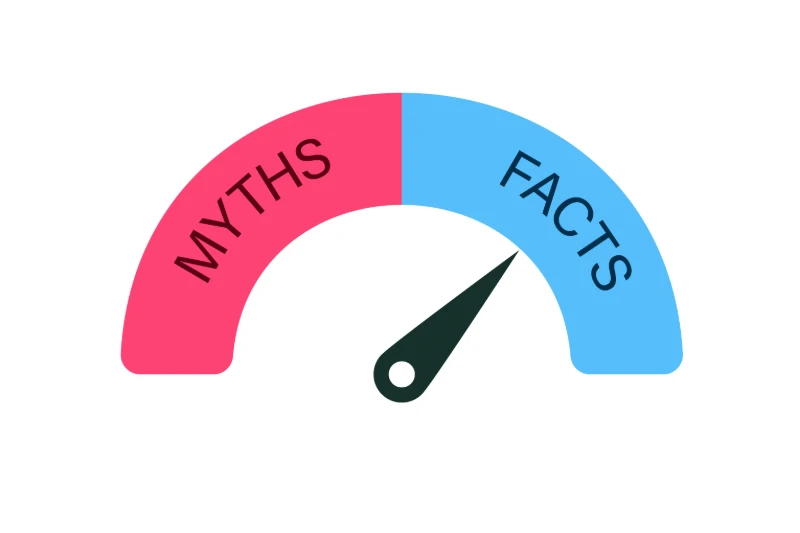Homebuyer 101: Rule of 2s
The basics of the Rule of 2’s
- 2 Paystubs
- 2 Months Bank Statements
- 2 years W-2
- 2 Years Tax Returns
- 2 Years of address history
- 2 years of job history
Navigating the mortgage landscape feels akin to conquering a mountain range, with the daunting Rule of Twos acting as an unwritten map for homebuyers. Preparedness becomes paramount, as documentation in duplicate is a non-negotiable standard.
Prepare for consistency.
To establish your financial reliability, start gathering the requisite pairs. Acquiring these doubles is vital for the journey ahead, ensuring smoother transitions toward homeownership.
Understanding the Rule of 2s
Stepping into the world of home financing, you’ll encounter an underwriting principle known as the Rule of 2s. This duplicity ensures a transparent, consistent snapshot of your finances, earning you a vote of confidence from lenders. Embark on this documentation dance by securing pairs of pay stubs, bank statements, W-2s, and tax returns that reveal the rhythm of your economic stability.
Beneath the umbrella of the Rule of 2s nestles a treasure chest of details shaping your monetary profile. Picture it as casting a trustworthy shadow, where each financial silhouette—traced from the past two years—melds together to construct a clear, dependable narrative. This fiscal diptych paints an attractive portrait to underwriters, allowing them to piece together a reliable and holistic view of your financial journey.
The Significance for Mortgage Underwriting
In the discerning eyes of an underwriter, the Rule of 2s acts as a meticulous beacon. Consistent, paired documentation forms the bedrock of trust between borrower and lender, offering a crystal-clear financial portrayal.
By scrutinizing pairs of pay statements and asset documents, the Rule of 2s paints a picture of stability and reliability—crucial for securing the funds to plant your roots. It is the underwriter’s looking glass, magnifying financial consistencies or revealing any disparities.
The Rule of 2s is the harmonious march towards your home-buying goal.
Consider this: when your financial story is compiled, every detail must align, every number must sing in chorus. That’s why updated, sequential snapshots of your economic life—best reflected in recent documents—are imperative. They’re not just papers; they’re the keys to unlocking your new home.
Documents Commonly Requested in Pairs
Pay stubs are foundational for underwriting.
Lenders view consecutive pay stubs as a snapshot of your earning stability. They’re seeking patterns in your income that demonstrate consistency over time. To them, two recent pay stubs are like fiscal pulses—singular beats don’t tell the full story. Together, they verify the rhythm of your financial health and employment status.
Bank statements are next on the list.
When it comes to assets, two is the magic number. Underwriters inspect these to assess your saving habits and financial reserves. They comb through two months of bank statements to spot regular deposits and withdrawals—a binary testament to your financial discipline.
Tax returns and W-2s require a biennial perspective.
For a broader fiscal narrative, two years of tax returns and W-2s give underwriters a more comprehensive look into your income history. This longer time frame helps them to understand your financial trajectory and potential for sustaining mortgage payments. It’s all about long-term fiscal fidelity.
Ensure all documents are the most current.
Your vigilance in providing the latest two iterations of these documents is crucial. As time marches on, financial positions can shift, so the most recent pair of pay stubs or bank statements becomes the new vanguard of your economic story. By staying current, you’re not only complying but also reinforcing your case for home ownership.
Pay Stub Verification
Providing recent pay stubs is pivotal; it proves income stability and employment longevity. These dual snapshots of your earnings, parsed for consistency in hours and pay rates, are fundamental evidence of your ability to shoulder your prospective mortgage.
Failure to present these bi-monthly vignettes could jeopardize your loan approval. Lenders scrutinize these slips to ensure your financial capacity matches the obligations of the home you aim to purchase.
Ensuring Income Consistency
Maintaining a consistent income stream is explicated through your most recent, sequential pay stubs. These documents are tantamount to a narrative of your earnings, spotlighting reliability and continuity in your financial life.
Lenders appraise these slips with a fine-toothed comb. A steady income often signals a dependable borrower.
Indeed, variable hours or compensation can raise red flags for underwriters. They seek stability (quantifiable through consecutive documentation) when approving loans.
These papers affirm your salary’s resilience against economic fluctuations. Illustrating that your income is impervious to seasonal ebbs or unexpected shifts fortifies your profile.
Such financial constancy is your stepping stone to loan approval. Having uninterrupted income evidence readily conveys to lenders the enduring viability of your fiscal health in the context of home ownership ambitions.
Fluctuations in pay could spark inquiries into your job’s permanence. Always remember, unwavering documentation becomes a strong ally in navigating the underwriting labyrinth.
Importance of Recent Pay Stubs
Recent pay stubs are pivotal for lenders to verify your current earnings and job consistency. They reflect your most current financial status.
They act as proof of ongoing employment. Clarity about your current income level is essential.
Pay stubs from the last two pay periods offer lenders a snapshot of your financial stability, presenting a clearer picture of your regular income, deductions, and taxable earnings. Consequently, they’re fundamental in assessing not only your ability to repay the loan but also the risk involved for the lender.
Moreover, most recent pay stubs help to preempt any potential gaps or issues that may not be apparent with older documents. They serve as a testament to your continuous financial health and, hence, are a critical component of the mortgage approval process. Remember, continuity and timeliness are “key” in demonstrating your financial readiness to assume the responsibilities of homeownership.
Asset Statement Essentials
When compiling your asset statements for mortgage consideration, think of them as financial autobiographies speaking directly to your lender. The statements from your depository and investment accounts should include the last two months of transaction history. This dual-month snapshot gives underwriters insight into your spending habits, existing liabilities, and how you manage your cash flow. For them, it’s not just about the present balance; it’s about seeing the flow of funds—your ability to save, spend wisely, and handle finances consistently. Ensure that these statements are the most recent to avoid any delays or additional documentation requests in your home-buying journey.
The Need for Two Months’ Statements
Underwriters seek to mitigate risk by scrutinizing financial patterns. Two months’ bank statements offer a panoramic view of your fiscal behavior, enabling a thorough assessment of your readiness to manage a mortgage.
The requirement for two consecutive months’ worth of account statements is not arbitrary; rather, it acts as a buffer against anomalies. This duration allows underwritersto distinguish between one-off occurrences and consistent financial habits, ensuring that your profile reflects typical cash flow and not just a momentary peak or dip.
Moreover, these documents serve as a barometer for your fiscal stability. They capture recurring payments and deposits, displaying your financial commitments and how punctually you fulfill them. In essence, these statements narrate the regularity and reliability of your income and outgoings.
Lastly, in the dynamic milieu of finance, ‘current’ is a keyword. To establish your up-to-the-minute financial standing, you must provide statements that are as fresh as possible. Supplied documents that are too dated could lead to unnecessary complication, potentially necessitating updated statement requests and delaying the mortgage process.
Refreshing Documentation Pre-Approval
Documentation aging is a significant concern, emphasizing the necessity to provide recent records. Homebuyers should prioritize updating their pertinent financial documents regularly.
As you navigate the home buying journey, remember that your financial image is not static. Changing jobs, receiving bonuses, or incurring new debts can all influence your financial landscape, underscoring the need to supply the most current documentation. Meticulous updating of files can prevent delays in the underwriting process, propelling you closer to homeownership.
Staying responsive to your loan officer’s requests for updated information is crucial. Prompt submission of the latest two pay stubs and bank statements ensures that your mortgage application remains accurate and reflective of your true fiscal situation.
Furthermore, it is incumbent upon you, as the homebuyer, to monitor your financial standing closely. Regularly reviewing your accounts and communicating with your loan officer can foster a smoother, more efficacious pre-approval process. By staying ahead of documentation requirements, you enhance the likelihood of a timely and favorable mortgage approval.
Tax Returns and Employment History
Diving into the specifics, understanding the intricacies of providing two years of tax returns and W-2s is paramount. This long-view snapshot of your financial health enables underwriters to assess income stability and career progression, which are crucial in evaluating your loan eligibility. This detailed review ensures your income is consistent and verifiable over a significant period, highlighting your reliability as a borrower.
Employment history, similarly, is examined with a two-year scope, with the objective to establish a pattern of steadiness and commitment in your work life. This timeline reflects not just where you have been employed, but it implicitly signals the likelihood of continued employment, a key factor in the risk assessment carried out by the mortgage lender.
Two Years of Tax Documents
The underwriting process necessitates a detailed view of your income via two years of tax documents, providing a trustworthy financial narrative.
- Two Most Recent Tax Returns: Ensure the tax returns are complete and signed, encompassing all schedules and attachments.
- Complementary W-2s or 1099s: Provide W-2s or 1099s that correspond with the tax years of the returns you’ve submitted.
- Amendments or Extensions: If applicable, include any amendments or IRS-approved filing extensions to demonstrate full compliance.
These documents are critical for underwriters to verify income consistency and employment stability over time.
Accuracy and completeness of your tax-related submissions are paramount; any discrepancies can raise concerns and potentially hinder the loan approval process.
Verifying a Two-Year Work and Residence History
Lenders scrutinize your stability by examining your work and residence history over the last two years.
- Compile Employment Records: Gather W-2 forms, pay stubs, or 1099s that show employment for the past 24 months.
- Document Residential Addresses: List all residences, including rental agreements or mortgage statements, where you’ve lived.
- Explain Employment Gaps: If there are any gaps in your employment, provide a written explanation detailing the reason(s).
It’s crucial to present a clear, uninterrupted timeline of your work and living situation.
Any inconsistencies should be addressed proactively to avoid complications in your mortgage application process.
The post Homebuyer 101: Rule of 2s appeared first on 719 Lending.
Categories
Recent Posts











